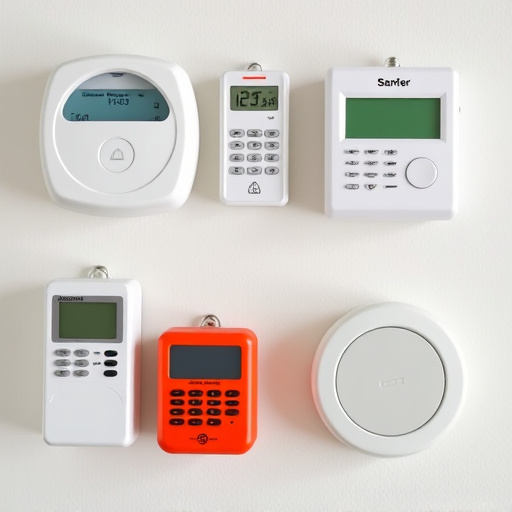Lone workers face unique security risks, necessitating specialized solutions. Wearable Safety Alarms for Joggers offer a proven method to enhance personal security and emergency response. These devices include GPS tracking, automatic fall detection, and one-touch alerts, providing vital assistance in remote areas. Selecting an alarm with features like water resistance, advanced GPS, and two-way communication ensures robust protection. Proper training, regular use, and testing maximize their effectiveness, ultimately bolstering personal safety for joggers and lone workers.
Lone workers, whether they’re construction professionals, delivery drivers, or joggers, face unique risks. Navigating isolated environments without immediate assistance can be perilous. This article provides a safety alert system guide focused on wearable alarms—a lifeline for lone workers. We’ll explore the critical understanding of risks, dissect the benefits of wearable alarms like those popular among joggers, outline key features to seek in such devices, and offer expert tips on effective training and alarm usage.
- Understanding Risks of Lone Workers
- Wearable Alarms: A Lifesaving Solution
- Features to Look for in Safety Devices
- Training and Using Your Alarm Effectively
Understanding Risks of Lone Workers
Lone workers, whether they’re jogging in the early morning or completing tasks on a construction site, face unique risks that require effective safety measures. Understanding these risks is the first step towards implementing robust safety protocols. Many hazards can be mitigated with the use of wearable safety alarms designed specifically for such scenarios.
For instance, joggers who venture into secluded areas may benefit from a Wearable Safety Alarm for Joggers, which allows them to instantly alert emergency services or trusted contacts in case of an unexpected incident. These devices offer peace of mind by providing a simple yet powerful tool to enhance personal safety and ensure prompt assistance if needed.
Wearable Alarms: A Lifesaving Solution
Wearable alarms have emerged as a lifesaving solution for lone workers, especially those who engage in activities like jogging or hiking in remote areas. These compact devices, designed to be worn on the wrist or clipped onto clothing, offer a quick and discreet way to summon help in emergencies. Equipped with features such as GPS tracking, automatic fall detection, and one-touch alert buttons, wearable safety alarms provide peace of mind by ensuring that assistance can be reached promptly if something goes wrong.
For joggers venturing into secluded trails or parks, a wearable safety alarm becomes an indispensable companion. In case of an unexpected accident or illness, the alarm can instantly notify emergency services, including personal details and location coordinates, facilitating swift response times. This technology empowers lone workers by turning their mobility into a strength, enabling them to enjoy outdoor activities with enhanced security.
Features to Look for in Safety Devices
When choosing a safety device, such as a wearable safety alarm for joggers, look for key features designed to enhance protection and peace of mind. First and foremost, consider devices with automatic fall detection technology, which can instantly alert emergency services if you experience a sudden, unexpected fall while out on your run. Advanced GPS tracking is another must-have, allowing you to be pinpointed on a map in case of an emergency, even in remote areas.
Additionally, look for products offering two-way communication, enabling you to call for help directly from the device and contact loved ones with a simple press of a button. Water resistance and durable construction are also important considerations for ensuring your safety alarm can withstand the rigors of outdoor activity.
Training and Using Your Alarm Effectively
Proper training is key to making sure a wearable safety alarm for joggers, or any lone worker, is effective. This includes understanding when and how to activate the alarm, as well as learning the range of sounds and vibrations it produces so that you can use it in various situations. Many systems also offer personalized settings, allowing users to customize alarms for specific needs, such as setting off different signals for help or emergency contacts. Regular practice sessions will reinforce these skills and ensure the alarm is ready when needed.
Once trained, consistent use of the alarm is vital. Always wear it while jogging alone, and activate it promptly if you feel unsafe. Testing its functionality regularly, like checking the battery life and ensuring clear communication with monitoring services, is also crucial. By making these practices a routine part of your jogging experience, you maximize the safety benefits offered by a wearable safety alarm.
Lone workers, especially those who engage in activities like jogging, face unique risks that demand immediate attention. Implementing a wearable safety alarm is not just a safeguard but an essential tool for peace of mind. By choosing devices with GPS tracking, automatic fall detection, and long-lasting battery life, individuals can ensure they’re prepared for any emergency. Proper training on how to use these alarms effectively further enhances their reliability. Embrace technology designed to keep you safe while alone, like the Wearable Safety Alarm for Joggers, and take control of your well-being today.
